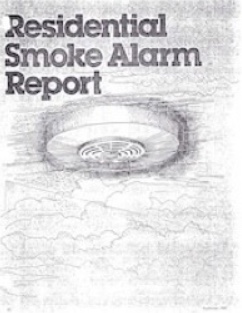THE ALARMING TRUTH
How Flawed Smoke Alarm Standards have Led to
Tens of Thousands of Needless Injuries and Deaths
Part 1
Chapters 1 - 8 | 1997 - 2006
Chapter
Date
Content
1
1997
Nov
WFSF Co-Founders discover life-threatening problems with ionization alarms.
2
1997
Dec
U.S. & Canadian Smoke Alarm Standards Exposed
Media reports about flawed standards inspire WFSF's campaign.
3
2004
Oct
'Stop The Children Burning' Launched in Australia
[NZSC: 1 of 5] Stop The Children Burning (STCB) on Australian national TV.
4
2005
Feb
Australia's Flawed Smoke Alarm Standard Exposed
WFSF warns about flawed Australian smoke alarm standard on TVNZ
5
2006
May 9
N.Z. Fire Service (NZFS) Undermines NZSC Warning
[NZSC: 2 of 5] NZFS controversial media release after N.Z. Safety Council interview.
6
2006
May 25
'New Zealand Fire Service - Saving Face or Saving Lives?’
[NZSC: 3 of 5] Response to NZFS undermining N.Z. Safety Council's warning.
7
2006
June 1
'Position on Smoke Alarms in Residential Accommodation'
[NZSC: 3 of 5] Response to NZFS undermining N.Z. Safety Council's warning.
8
2006
June 6
Consumer Research - Ionization Warning on National TV
[CNZ: 1 of 4] All ionization alarms fail in Consumer N.Z.'s first scientific study.
Chapter 1
1977 | November
In the Beginning. . .
World Fire Safety Foundation (WFSF) Co-Founders
discover life-threatening problems with ionization smoke alarms.
In November 1997 Adrian Butler & Karl Westwell launched Maximum Fire & Safety (MFS) a division of their Maximum Security franchise that they founded in 1993. MFS sold and installed thousands of ionization smoke alarms throughout New Zealand and Australia.
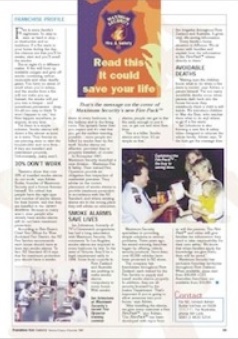
Maximum Fire
& Safety launch
with ionization
alarms featured
in 'Franchise New Zealand' magazine.
Nov 1997
'Franchise New Zealand'
Magazine | MFS Report | 1997
Smoke Alarms Failed
However, they soon discovered a serious life-threatening safety problem. Consumers complained that whilst their smoke alarms would go off when cooking, they would often fail to operate in the early, smoldering stage of fires.
Fire Chiefs 1980 Warning
After some research, Butler & Westwell discovered that U.S. Fire Protection Engineer, Mr Richard Patton, had been running a campaign to warn about ionization alarms since the mid 70's and that the International Association of Fire Chiefs (IAFC) had warned about ionization alarms in 1980.
International Association of Fire Chiefs 'Residential Smoke Alarm Report' | 1980
In their report the IAFC warned lives were at risk with ionization alarms. It said it could take no other course but to recommend photoelectric smoke alarms because:
". . .most ionization detectors will not
respond quickly to a slow, smoldering fire. . ."
Chapter 2
1999 | December
U.S. & Canadian Smoke Alarm Standards Exposed
Media reports about flawed smoke alarm standards inspire
World Fire Safety Foundation's ionization smoke alarm campaign.

'How Safe Are Products Bearing The UL Mark?'
The Washington Post, Washington D.C, U.S.A. | Dec 1999
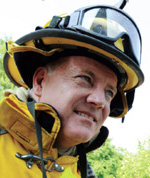
America's Flawed Smoke Alarm Standard Exposed
Underwriters Laboratories (UL) is the worlds largest independent
product testing company. Since 1977 the validity of UL’s scientific
testing of ionization smoke alarms has been under scrutiny

Boston Fire Department's Chief
Joseph (Jay) Fleming warned:
"While an alarm may sound in UL
Labs it may not go off in a home..."
The UL Mark
Found on billions
of products globally
Chief Joseph (Jay) Fleming
Boston Fire Dept | MA | U.S.A.
RIGHT CLICK
Download
Report
.4MB
1977 - UL Standard Challenged
UL smoke alarm standards testing was challenged in a 'Business Week' report:
'The Fiery Debate Over Smoke Alarm Efficiency'.
2011 - UL Sued for Flawed Smoke Alarm Standard:
After UL was sued for alleged fraudulent testing, they finally rectified their flawed smoke alarm testing which allowed ionization smoke alarms to be certified as safe when they are not. The revised standard comes into effect in June 2021.

Jan 2000 | 'Silent Alarms' | Canadian TV
Canadian TV's award-winning documentary exposes the shocking
truth about ionization smoke alarms with scientific testing and landmark lawsuit.
20:01 "...all of them are hiding and sneaking and keeping things from the public that the public needs to know about in order to remain safe."

Nathan Mercer
Ionization Smoke
Alarm Victim
SILENT ALARMS
20:59 "In 3 out
of 4 smoldering
fires no alarm sounded at the level required
by the federal government."

Tom Clark
CTV Reporter
7:49 "A smoke detector that sounds approximately nineteen minutes after smoke reached its
sensing chamber is like an airbag that does not deploy until nineteen minutes after a car accident."
Judge David E Schoenthaler | Mercer vs Pittway; BRK Brands Inc | Davenport, Iowa, U.S.A. | April 1998
After Being Ignored by Authorities, WFSF
Founders Decide to Make Their Own Documentary
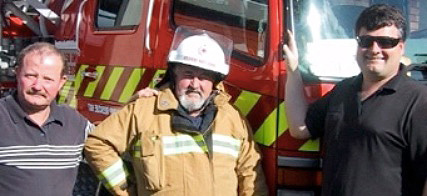
WFSF Co-Founders, Adrian Butler (left) & Karl Westell (right)
in Waihi, New Zealand during filming of the World Fire Safety
Foundation's documentary, 'Stop The Children Burning'
World Fire Safety Foundation Comments:
Richard Patton FPE
In 2000 Canadian TV (CTV) provided us with contact details for U.S. Fire Protection Engineer Mr Richard Patton the President of the 'Crusade Against Fire Deaths'. In 1967 Mr Patton chaired the committee that produced America's first smoke alarm standard. He was the first person globally to expose the problem with ionization alarms. In 1976 Patton distributed his 'Smoke Detector Fraud Report' to over 3,000 fire Chiefs across the U.S. Mr Patton provided us with overwhelming evidence against ionization alarms from his campaign that started in 1976.
Mercer vs Pittway Corporation; BRK Brands Inc.
The Mercer law suit against the world's largest smoke alarm manufacturer was the inspiration behind 'Silent Alarms'. Download Patton's 1993 letter sent to Nathan and Jennifer Mercer warning about industry cover-up.
Silent Alarms Silenced
After distributing hundreds of copies of 'Silent Alarms', we sought New Zealand and Australian distribution rights. However, CTV refused as they were "under litigation" from the ionization alarm manufacturer they exposed.
Stop The Children Burning
As the New Zealand Fire Service refused to accept the overwhelming evidence against ionization alarms, and we we could not use 'Silent Alarms', we decided to make our own documentary, 'Stop The Children Burning' - a film that could not be silenced.
Chapter 3
2004 | October
[NZSC: 1 of 5]
World Fire Safety Foundation Documentary:
'Stop The Children Burning' Launched in Australia
WFSF Documentary
Stop The Children Burning
The story behind the Waihi and Smithton tragedies
where seven people died (including five children)
in house fires fitted with 'working' ionization alarms.
Endorsed by:
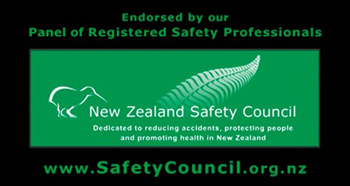
New Zealand Safety Council
Presented by:
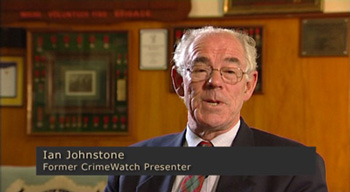
Ian Johnstone
Former TVNZ Crimewatch Presenter
Note:
In 2006 the 'International Crusade
Against Fire Deaths' changed its
name to the World Fire Safety Foundation
Richard Patton FPE
ACA, 'Smoke Alarms' | Oct 2004
Richard Patton FPE
Fire Protection Engineer
2:09 "The ionization alarm.
is a piece of junk."
'A Current Affair' - Presented by Ray Martin
David Isaac appeared
on the program to give
an industry perspective.
Seven months later he
wrote to the Fire Service:
New Zealand Fire Service -
'Saving Face or Saving Lives'
David Isaac
FPA Australia
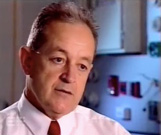
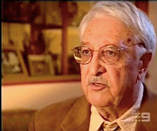
STOP THE CHILDREN BURNING
World Fire Safety Foundation Documentary | Released: Oct 2004 | Version 3.2 - Updated: Dec 2011 | 47 minutes
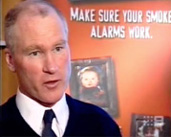
Damien Killalea
Director Community Safety
Tasmania Fire Service
World Fire Safety Foundation Comments:
Tasmanian Testing
After the Tasmania Fire Service (TFS) watched 'Stop The Children Burning' they conducted their own smoke alarms testing. All ionization alarms failed the smoldering fire test.
The TFS's Damien Killalea was a member of the Australasian Fire Authorities Council (AFAC), the peak representative body for all Australian and all New Zealand Fire Brigades. After the Tasmanian testing he took the issue up with AFAC.
AFAC's Metastudy
AFAC commissioned a metastudy (a study of global research) on ionization and photoelectric smoke alarms. Nineteen months later, on 1 June 2016, AFAC released its 'Position on Smoke Alarms' vindicating the WFSF's stand.
Chapter 4
2005 | February
Australia's Flawed Smoke Alarm
Standard Exposed on National New Zealand TV
WFSF warns about flawed Australian smoke alarm standard on TVNZ's 'Close Up'.

"...we had no idea there were two types
(of smoke alarms) ... why haven't we been told?"
TVNZ Presenter Susan Wood | See 'NZFS - Saving
Face or Saving Lives?' letter below | Page 3, Paragraph 6
0:19 "But even if smoke alarms had..
been fitted, there are fresh claims that..
they may not have saved the wee girl's life."
Susan Wood, TVNZ Presenter | 'Close Up' | 22 Feb 2005
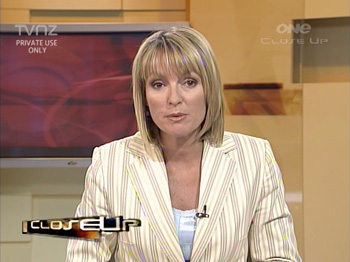
Susan Wood, Presenter, TVNZ
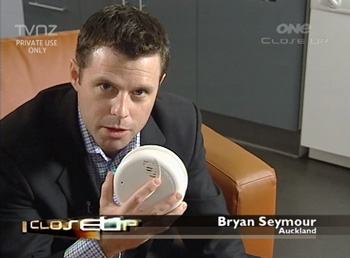
Bryan Seymour, Journalist, TVNZ
4:13 "These (photoelectric alarms) are proven more effective at
detecting smoke from the slow burning fires that often kill."
Bryan Seymour, TVNZ Journalist | 'Close Up' | 22 Feb 2005
WFSF Warning About
Flawed Smoke Alarm Standards
2:30 "The problem stems right back to the fact..
that the standards themselves are faulty."
Adrian Butler, WFSF | 'Close Up' | 22 Feb 2005
RIGHT CLICK
Download
Document
.4MB
“Ionization alarms are allowed to go to
50-60% (smoke) obscuration per meter,
dangerously high, totally unacceptable!”
David Isaac, Standards Australia Committee
FP002 Member, NSW, Australia | August 2006
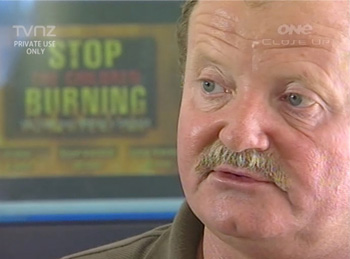
Adrian Butler, Chairman, WFSF
Can Australian & U.S. Smoke
Alarm Standards be Trusted?
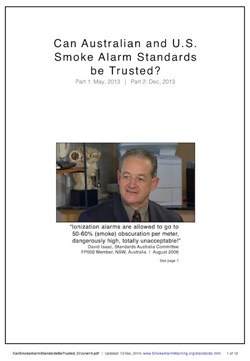
WFSF Report Published in
Volunteer Fire Fighter Magazine

TVNZ's 'Close Up' video is currently unable to be shown publicly.
Journalists, lawyers or fire departments may request permission to
view this video. To send an email request, CLICK HERE > > >
Chapter 5
2006 | May 9
[NZSC: 2 of 5]
New Zealand Fire Service (NZFS) Undermines
New Zealand Safety Council's (NZSC) Warning
NZFS controversial media release after NZSC radio interview.
Mr David Calvert, Founder of the New Zealand Safety Council is one of the most highly
qualified safety professionals in New Zealand. On 9 May 2006 he gave a radio interview
to warn the public about the life-threatening safety issues with ionization smoke alarms.
This is the response from the New Zealand Fire Service. . .
Subject: May 9, 2006. Media Release.
New Zealand Fire Service Position
on ionization vs Photoelectric Smoke Alarm Debate
Media release from Dr Paula Beever, National Director Fire Risk Management, in response to a radio item this morning:
May 9, 2006
Working smoke alarms better than no smoke alarms, says Fire Service
The debate has been raised this week about what types of smoke alarms should be installed in homes.
The Fire Service says people should not lose faith in smoke alarms.
Working smoke alarms are far better than no smoke alarms at all.
"In most fatal fires in New Zealand no smoke alarms were installed, and most fires in this country begin in the kitchen; hot flaming fires well up to the ionization smoke alarms most commonly used in this country,"
says fire engineer Dr Paula Beever.
Dr Beever is a world recognised authority in fire engineering and runs the Fire Service's risk management arm.
She says that each year since 2002, 1,000 house fires have been successfully detected by smoke alarms, and two-thirds of these fires controlled without any damage to the house.
"Smoke alarms do save lives. All of them give people sufficient warning time to get everyone out - that is why we always advise people to get smoke alarms installed and practice your escape plans".
She says a consortium of Australasian fire authorities, including New Zealand, has commissioned research into smoke alarms and the results are due to be released shortly.
"We will adopt the findings as soon as they are available"
Paula says fire safety is not just about smoke alarms which are, at the end of the day, the ambulance at the bottom of the cliff.
"We are always urging people to stop fires happening in the first place.
There are three causes of fires - men, women and children. For instance one of our main messages is "keep looking while you're cooking".
Contact:
Dr Paula Beever
(cell number withheld)
Chapter 6
2006 | May 25
[NZSC: 3 of 5]
New Zealand Fire Service - 'Saving Face or Saving Lives?'
Response to N.Z. Fire Service undermining N.Z. Safety Council's warning.
Report sent to the New Zealand Fire Service's (NZFS) Dr Paula
Beever after her 9 May 2006 Press Release (above) undermined the warning
about ionization smoke alarms by Zealand Safety Council's CEO, Mr David Calvert
"In failing to provide appropriate information to the public, you have
ignored statistical information available from comprehensive international
data which paints a very different picture to that of your media release."
Mr David Isaac, fire industry expert, | Page 1, Paragraph 5
"The failure of the New Zealand Fire Service to provide proper
advice on smoke alarms appears entrenched within the Fire Service."
Mr David Isaac, fire industry expert, | Page 2, Paragraph 5
"We recommend people use them (ionization alarms)
and we do not intend to move away from that advice."
Gary Talbot, NZFS Fire Safety Integration Officer | Page 3, Paragraph 1
"...we had no idea there were two types (of smoke alarms) ... why haven't we been told?"
Susan Wood, TVNZ Presenter | Page 3, Paragraph 6
RIGHT CLICK
Download
Document
.05MB
World Fire Safety Foundation Comments:
NZFS's "world recognized authority", Dr Paula Beever, claimed in her 9 May 2006 official Media Release:
"Smoke alarms do save lives. All of them give people sufficient warning time to get everyone out." (page 6, para 9)
However, Dr Beever was wrong as evidenced by AFAC's official position
which was released just three weeks later - Clause 3 states:
"Ionization smoke alarms (the type in most New Zealand homes) may not
operate in time to alert occupants early enough to escape from smoldering fires."
Dr Beever also claimed in her media Release:
"We will adopt the findings (AFAC's findings - see below) as soon as they are available" (page 6, para 9)
The NZFS Claimed it Would Adopt AFAC's Findings:
"...as soon as they are available."
Critical Fact
Since 1 June 2006, the NZFS has never warned the New Zealand public
about the life-threatening safety issue with ionization smoke alarms, i.e. that they
"may not operate in time to alert occupants early enough to escape from smoldering fires."
'Position on Smoke Alarms in Residential Accommodation'
The Australasian Fire Authorities Council (AFAC - Australia/New Zealand)
& The International Association of Fire Fighters (IAFF - U.S.A. & Canada)
Official Positions on Smoke Alarms in Residential Accommodation
The Australasian Fire Authorities Council (AFAC) is the peak representative body for all Australasian fire brigades.
There are over 50,000 firefighters (including full-time and volunteers) throughout Australia and New Zealand.
Note: Circa 2009 AFAC changed it's name to the Australasian Fire and Emergency Service Authorities Council
AFAC's Official Position on Smoke Alarms
"That all residential accommodation be fitted with photoelectric smoke alarms . . . Ionization smoke
alarms may not operate in time to alert occupants early enough to escape from smoldering fires."
'Position on Smoke Alarms...' | AFAC | 1 June 2006 | Clause 3, Note 3, Page 3
RIGHT CLICK
DOWNLOAD
DOCUMENT
.05MB
IAFF Official Position on Smoke Alarms | August 2008
"WHEREAS, there are two principle types of smoke alarms that are intended to alert occupants of building fires: ionization and photoelectric smoke alarms. Ionization smoke alarms predominantly detect the presence of extremely small particles of smoke – often invisible – typical of flaming fires, while photoelectric smoke alarms predominantly detect larger smoke particles – always visible – typical conditions found at smoldering fires; and
WHEREAS, research indicates that both ionization and photoelectric smoke alarms are intended to provide occupants time to escape. However, ionization smoke alarms may not operate in time to alert occupants early enough to escape from smoldering fires (emphasis added - exact same wording as AFAC's official position above); and
WHEREAS, current research indicates that ionization smoke alarms detect flaming fires marginally earlier than photoelectric smoke. However, ionization smoke alarms are far more prone to nuisance alarms increasing the probability that they will be disabled by building occupants; and
WHEREAS, photoelectric smoke alarms detect smoldering fires and fires starting in areas remote from smoke alarms significantly earlier than ionization smoke alarms; and
WHEREAS, dual alarms, also called combination alarms, that contain both technologies are available but the benefit over photoelectric in the response to fires is marginal. They are more costly, and they will experience the same nuisance problem as ionization smoke alarms; and
WHEREAS, as many fires in residential occupancies begin as smoldering fires, particularly when occupants are sleeping, photoelectric smoke alarms provide more effective all-around detection and alarm than ionization alarms; and
WHEREAS, failure to detect a fire and provide an early alarm places building occupants at risk from an ever-escalating fire; and
WHEREAS, such escalating fires place the lives of firefighters responding to an increasing risk from such an escalating fire; and
WHEREAS, the increase in the use of photoelectric technology has the potential to save hundreds of lives each year and should be promoted as the technology of choice by members of the IAFF in their homes; and
WHEREAS, IAFF members should advocate for their mandatory requirement for placement and use of photoelectric alarms in fire and building codes, in a manner similar to recent legislation in Vermont and Massachusetts. . ."
2008 IAFF Convention | Resolution 15 | August 2008 | Pages 1-2
World Fire Safety Foundation Comments:
"Once a landlord, fire official, building owner, real estate agent or any official becomes
aware of the fact that ionization smoke alarms are not Fit For Purpose . . . Failure to warn
in these circumstances may lead to litigation in the event of death, injury or loss of property."
Adrian Butler, Chairman, WFSF | Queensland, Australia | March 2007
International Association of Firefighters (IAFF)
The IAFF is the official union representing over 300,000 U.S. and Canadian firefighters. In August 2008,
the IAFF published a Resolution taking the same official position as AFAC, i.e. that "ionization smoke
alarms may not operate in time to alert occupants early enough to escape from smoldering fires."
This following extract from the IAFF's official position is a must-read for all fire service personnel:

[CNZ: 1 of 4]
Consumer Research - Ionization Smoke
Alarm Warning on National Australian TV
All ionization alarms fail Consumer New Zealand's first scientific study.
0:24 ". . .the vast majority of us have the wrong type of smoke alarm fitted in our homes."
Tracy Grimshaw | Presenter, A Current Affair | NSW, Australia | 6 June 2006.
3.41 " A larger scale study of twenty one alarms conducted by New Zealand's Consumer's Institute showed.
the same disturbing results. Both types of alarms picked up blazing fires quickly, but when it came to.
smoldering fires, some ionization alarms took up to ten minutes to go off, and some did not go off at all."
Elise Mooney | Reporter, A Current Affair | NSW, Australia | 6 June 2006.
In Testing Commissioned by Consumer New Zealand
Ionization Alarms Failed to Pass Critical Smoldering Fires Tests
Consumer N.Z.'s Smoke Alarm Scientific Research
2006 | 2010 | 2014 | 2018
PART TWO
Chapters 9 - 17 > > >

"The world is a dangerous
place to live; not because
of the people who are evil,
but because of the people
who do nothing about it."
Albert Einstein
"Ignorance, allied with..
power, is the most.. ferocious enemy..
justice can have."

James A Baldwin
"The only thing..
necessary for the.. triumph of evil is that..
good men do nothing."

Edmund Burke

